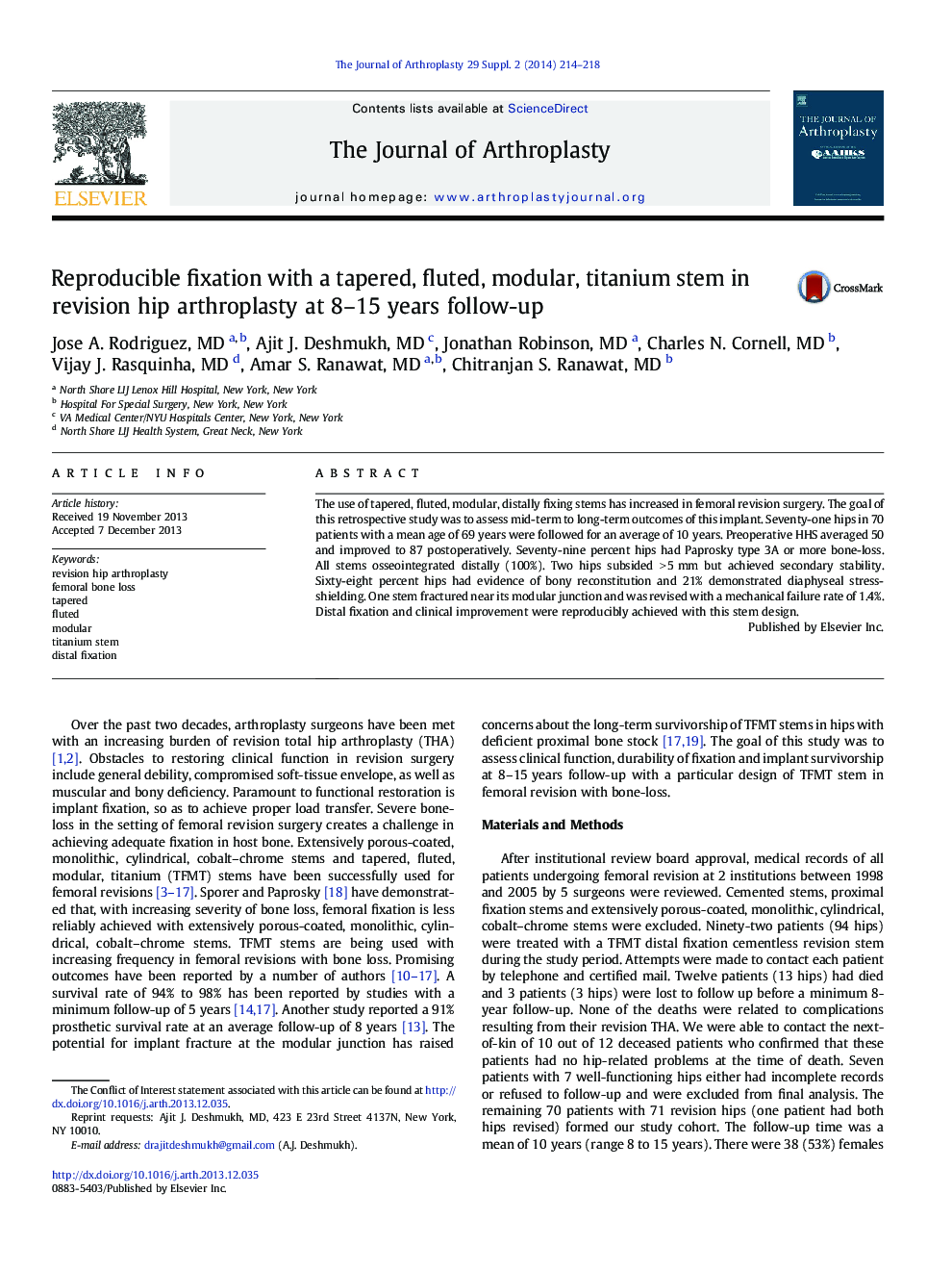| Article ID | Journal | Published Year | Pages | File Type |
|---|---|---|---|---|
| 4060685 | The Journal of Arthroplasty | 2014 | 5 Pages |
The use of tapered, fluted, modular, distally fixing stems has increased in femoral revision surgery. The goal of this retrospective study was to assess mid-term to long-term outcomes of this implant. Seventy-one hips in 70 patients with a mean age of 69 years were followed for an average of 10 years. Preoperative HHS averaged 50 and improved to 87 postoperatively. Seventy-nine percent hips had Paprosky type 3A or more bone-loss. All stems osseointegrated distally (100%). Two hips subsided > 5 mm but achieved secondary stability. Sixty-eight percent hips had evidence of bony reconstitution and 21% demonstrated diaphyseal stress-shielding. One stem fractured near its modular junction and was revised with a mechanical failure rate of 1.4%. Distal fixation and clinical improvement were reproducibly achieved with this stem design.
